The halfway point of the season is a good point to reflect on player performances so far with an eye to possible transfers in the summer. Last season I wrote a series of articles for this magazine looking at defenders, midfielders and forwards who clubs may target as they look to strengthen their squads going forward. My intention is to do the same this year and to begin with we will look at five central defenders who have caught my eye so far this term.
Each player will be assessed first of all from a statistical perspective with certain key statistical data that I favour when looking for central defenders. They will then each be broken down from a tactical perspective before I offer a suggestion as to which clubs may be interested in adding each player to their squad for next season.
They are not ranked in any way. In this tactical analysis, we will examine these players in more detail.
Stefan Posch 22-years-old (Hoffenheim)
Stefan Posch is a 22-year-old Austrian defender who is currently with Hoffenheim in the German Bundesliga. He is a versatile defender who is capable of playing either as part of a back three of a back four as well as playing in the fullback positions. Posch is an interesting player has he has received significant tactical coaching from Julian Naglesmann before the young German coach left at the start of this season to take charge of RB Leipzig.
Originally on the books of Admira Wacker in his native Austria the 22-year-old defender left before making his first-team debut to cross the Alps into Germany. This was part of the recruitment strategy of Hoffenheim under their director of football Alexander Rosen as the likes of Austria and Poland, who share a border with Germany, were scoured for young talents.
Posch is a good passer of the ball and generally looks for good opportunities to progress the ball into the opposition half. He is also strong and quick and his ability to defend when isolated in space makes him an ideal modern defender for teams who look to play their fullbacks high in their possession phase.
So far this season Posch has played 1895 minutes although this playing time has been split between the first and second teams for Hoffenheim. His defensive metrics are impressive and so far he is averaging 4.99 aerial duels and 5.89 defensive interceptions per 90 minutes. While defensive metrics are, of course, important when assessing central defenders am I generally drawn to players who can progress the ball when in possession. So far this season Posch has played 6.84 passes to the final third per 90 minutes and played 11.2 progressive passes.
For reference, Wyscout classifies a progressive pass as the following. A pass played 30 meters if the start point and the end point are in a players own half. A pass played 15 meters if a pass starts in one half and ends in another half and a pass played 10 meters if the starting point and finishing point are in the opposition’s half.
One of the first things that stands out when you are analysing Stefan Posch is his ability to read the game and anticipate the movements of the opposition. Playing under Naglesmann has given the Austrian defender a deep understanding of the patterns of the game and we see this clearly time and time again with the way that the ball seems to be attracted to Posch when the opposition are attacking.
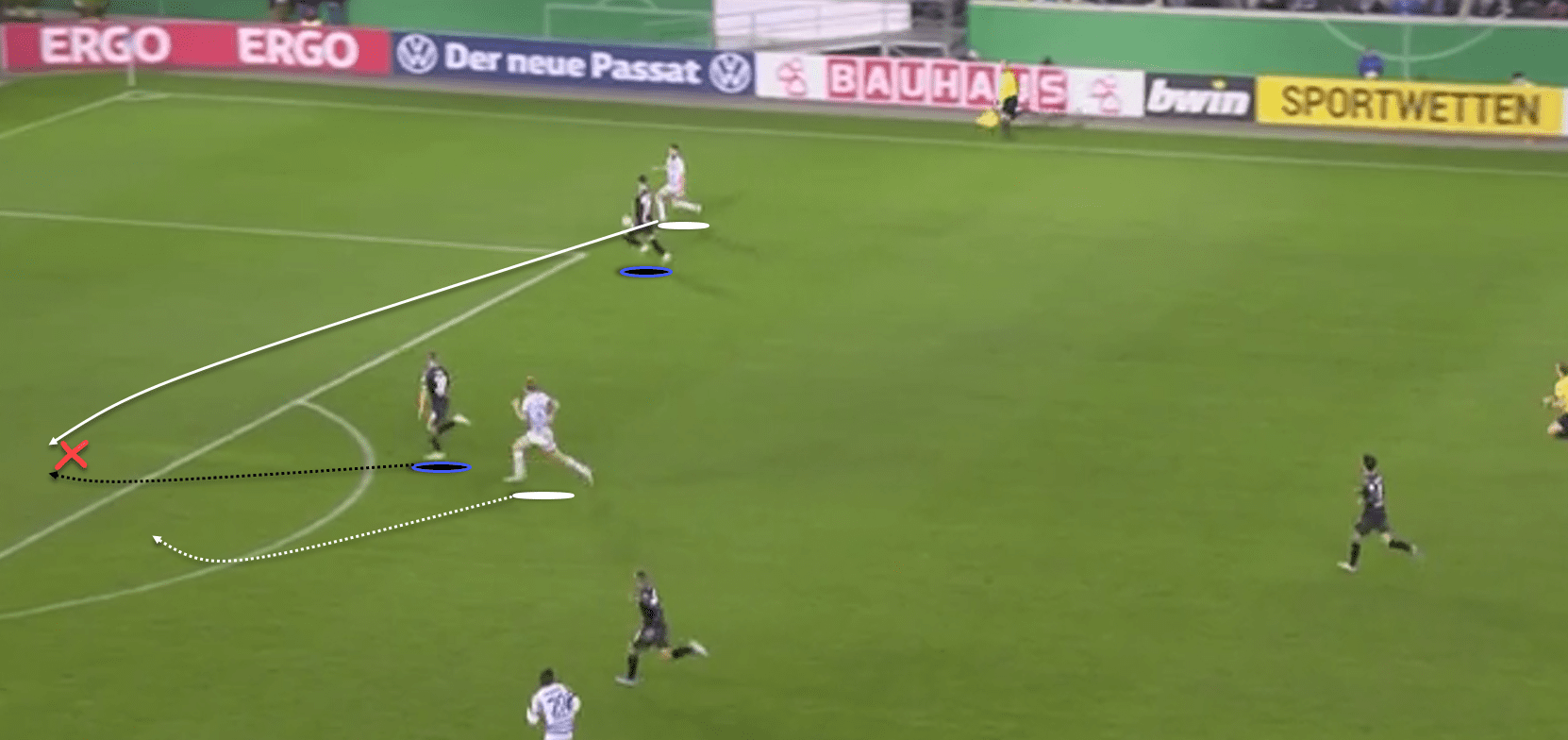
Here we see a moment when the opposition are attacking in the wide areas. As the wide attacker gets space to make the cross we see the central striker make a run around the blind side of Posch. He is looking to find the space to attack the ball. Posch, however, is intelligent enough to realise that the attacker will make this run and despite never taking his eye off the ball he still positions himself perfectly to intercept the cross before it can be completed.
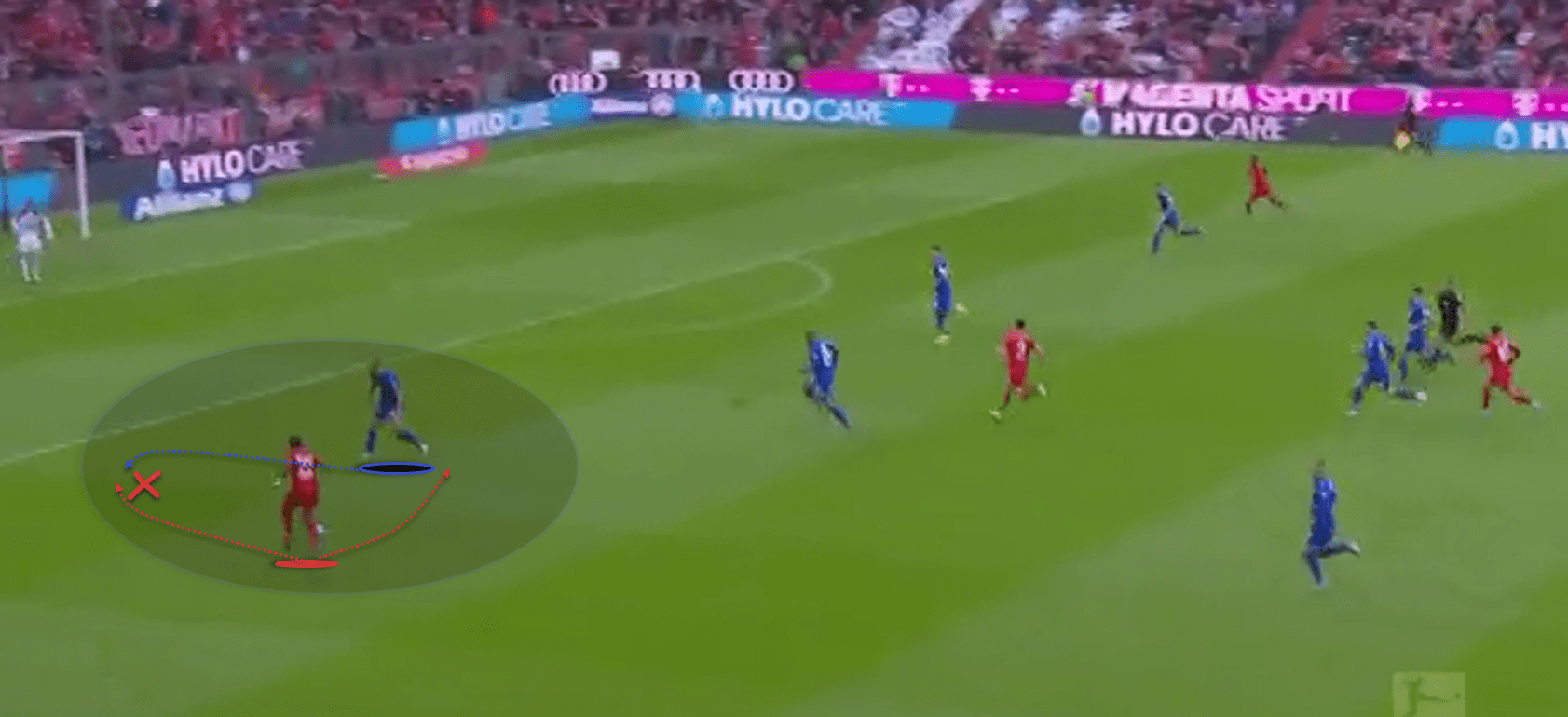
Posch is also excellent at defending when isolated 1v1 against an opponent. This is perhaps due to his ability to play on the right of a back three, where the wide central defenders are more likely to be attacked 1v1. We see an example of this above in a match against Bayern Munich. As the wide player takes possession he is able to attack Posch either down the inside or the outside. Posch keeps his distance, giving him time and space to react, In the end, the forward attacks wide and Posch simply steps across to cleanly tackle the ball.
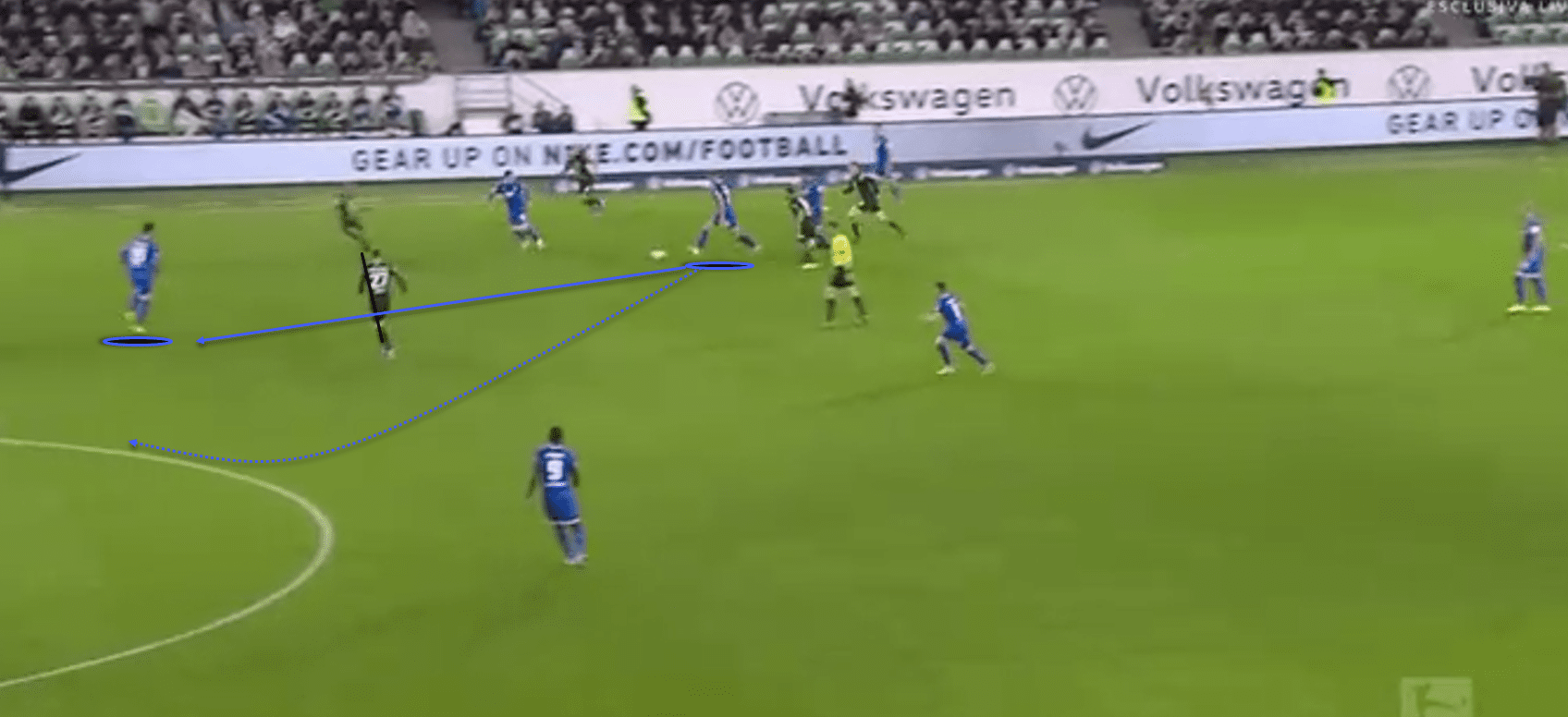
Posch is also very comfortable in possession of the ball and is comfortable when taking the opportunity to step forward to support the attack, either wide or centrally. We see an example of this above with Posch having just gained possession of the ball. He makes a quick vertical pass beyond the next line of the opposition but then he makes a run to support the ball as he moves into midfield.
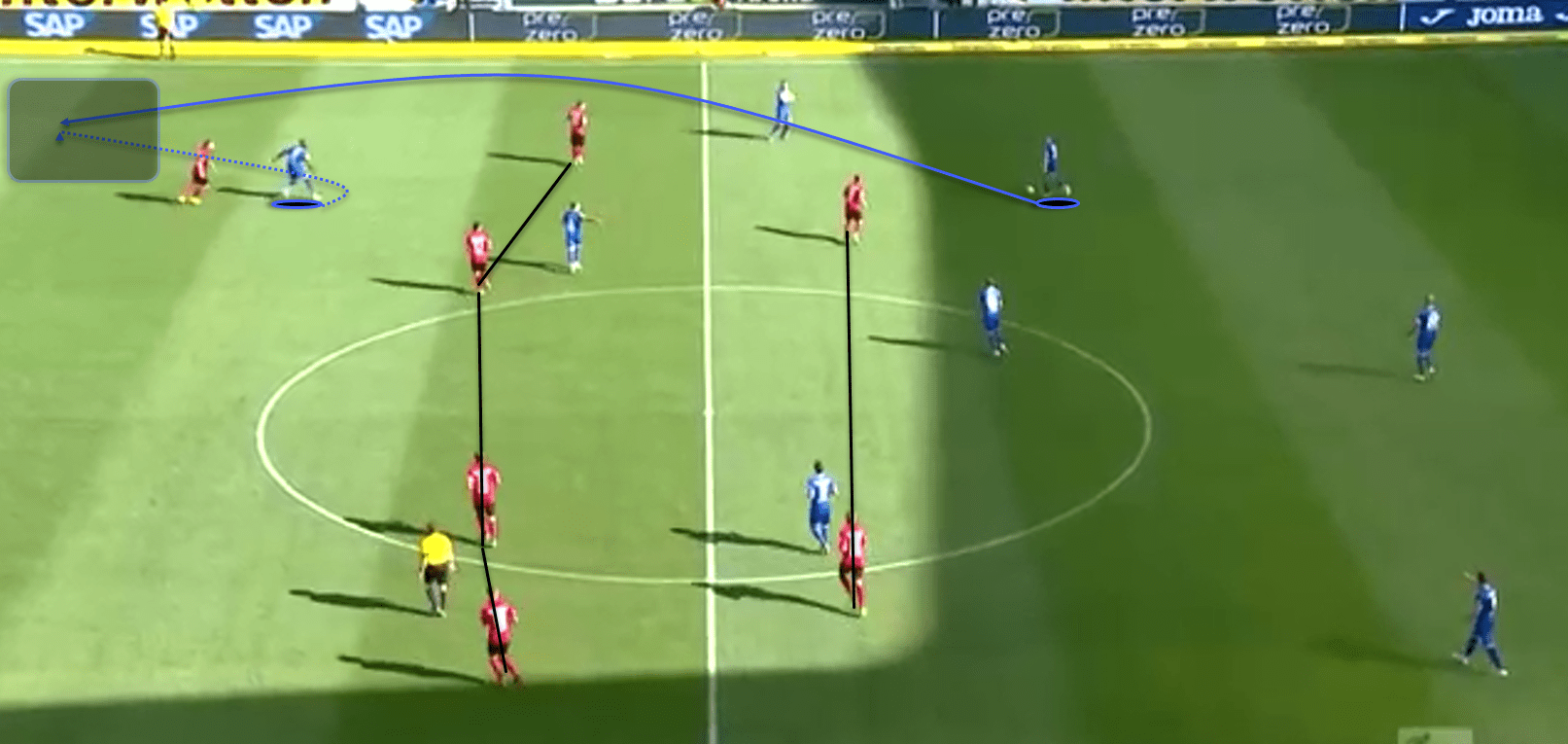
This time we see an example of his range of passing. As the forward player makes an initial run towards the ball the defender is attracted with him. That creates space behind the defensive player that can be exploited. Posch is composed enough to wait to release the ball at the right moment. As the forward spins to attack the space Posch plays a perfectly weighted pass to release him.
It is unclear whether Posch plans to leave Hoffenheim any time soon. If he does so then is will likely have a lot of suitors. Don’t be surprised if Naglesmann, his former coach, is among those and a move to RB Leipzig would make sense. A move to the lines of Ajax or Lyon would also make a lot of sense.
Carlos Cuesta 20-years-old (Genk)
Carlos Cuesta is a 20-year-old Colombian central defender currently in his first season in European football with Genk in Belgium. Originally a product of the Atletico Nacional youth system in Columbia the young defender made his first-team debut there before impressing for Colombia in the U-20 World Cup.
Genk, who play in the Belgian top-flight, have developed a reputation in recent years as excellent recruiters who are able to identify value in a variety of markets. It was, therefore, no surprise when Cuesta made the move to Belgium for a reported fee of 3.5M. Given the potential of the player, we can expect Genk to make a significant profit when they sell to a larger European club in the next year or two.
So far this season Cuesta has played 1640 minutes. His defensive statistics hold up to scrutiny in what has been a difficult season for Genk. He is averaging 4.23 aerial duels and 5.05 interceptions per 90 minutes. Cuesta is also good at progressing the ball and this is shown in his passing metrics. He is averaging 7.63 passes to the final third, 19.54 passes to the final third and 8.58 progressive passes per 90 minutes.
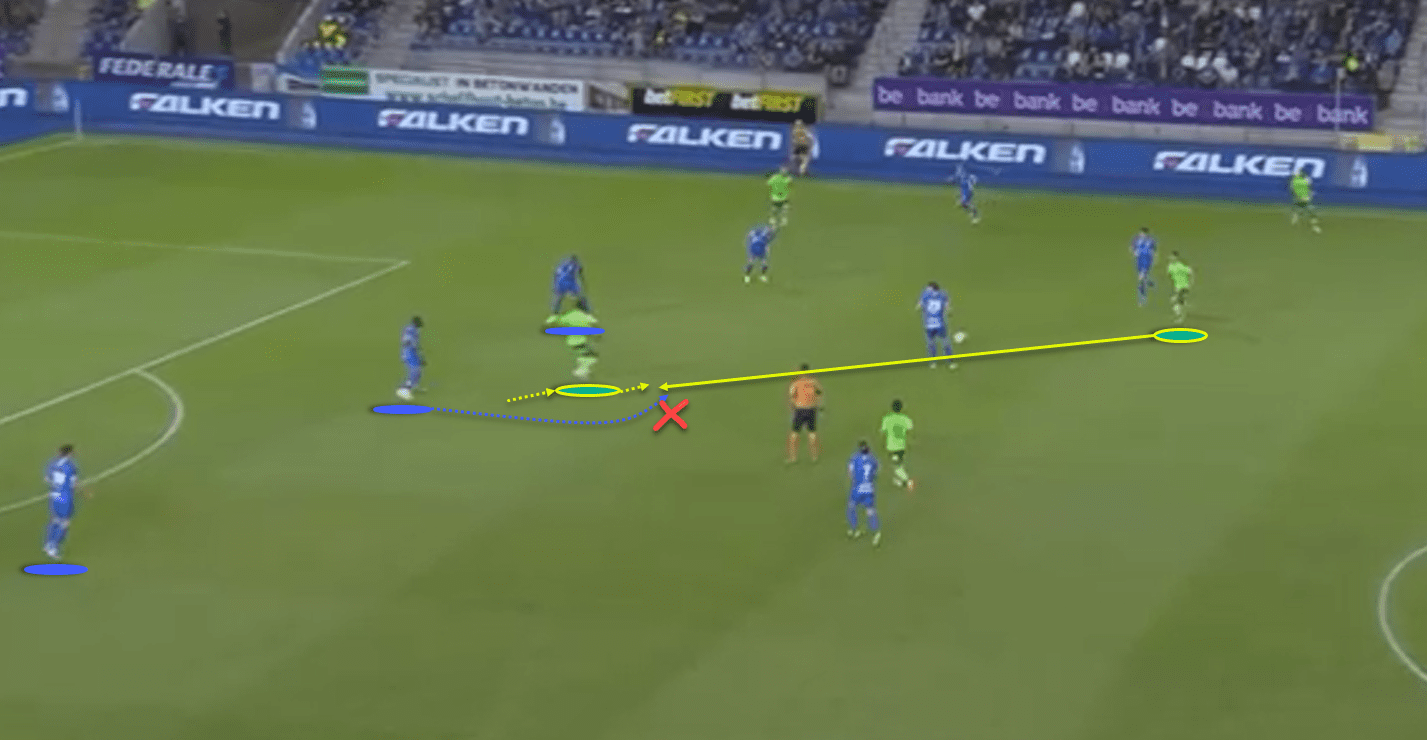
In terms of his defending style, Cuesta is very proactive and he has a tendency to take chances in order to win the ball in front of the attacking player. We see an example of this above as the opposition are attacking in the right-sided half-space. As the ball is played in diagonally we see Cuesta, playing centrally in a back three, move in front of the attacking player to win the ball.
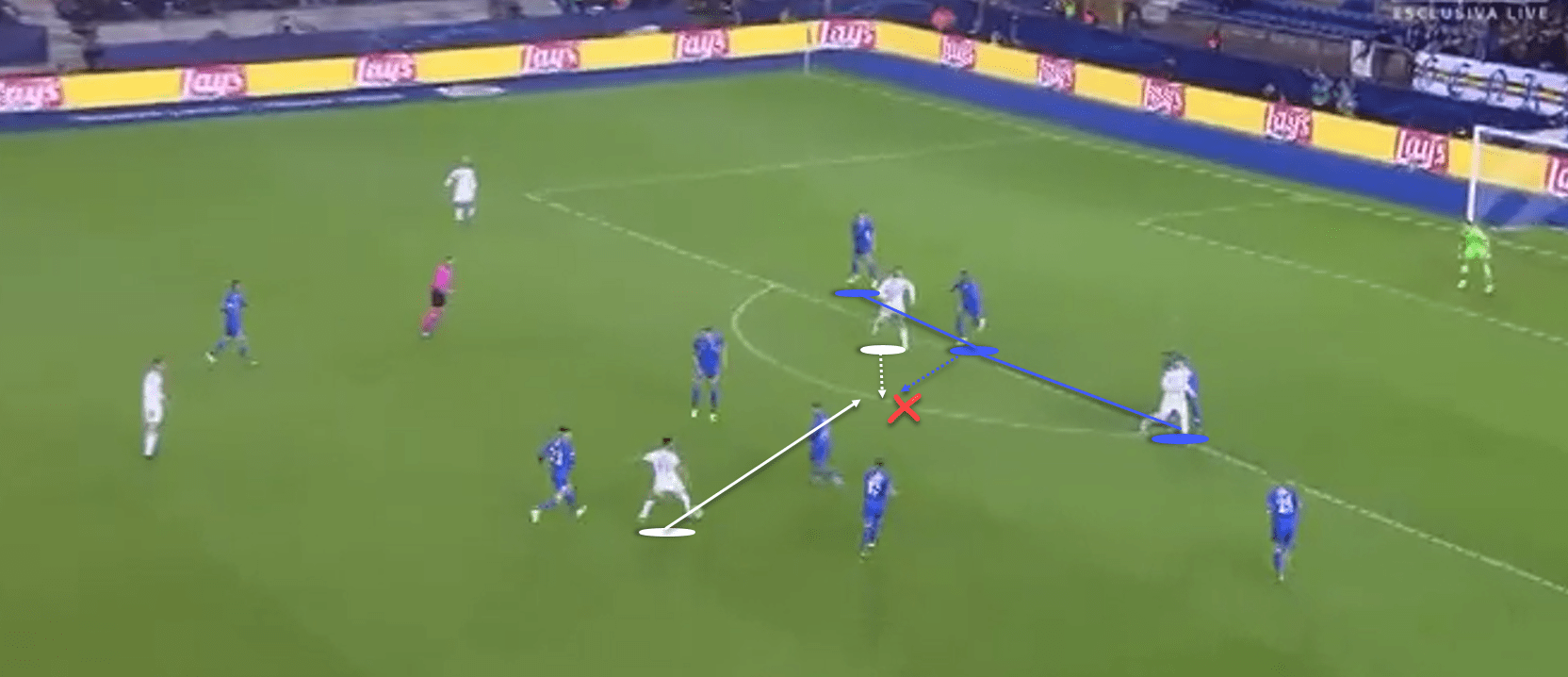
A similar situation here as the opposition striker moves across to try to accept possession of the ball centrally in front of the Genk defensive line. As the ball is played through we again see Cuesta playing centrally and he makes the proactive choice to step out in order to regain possession. He then calmly passes the ball forward from this area.
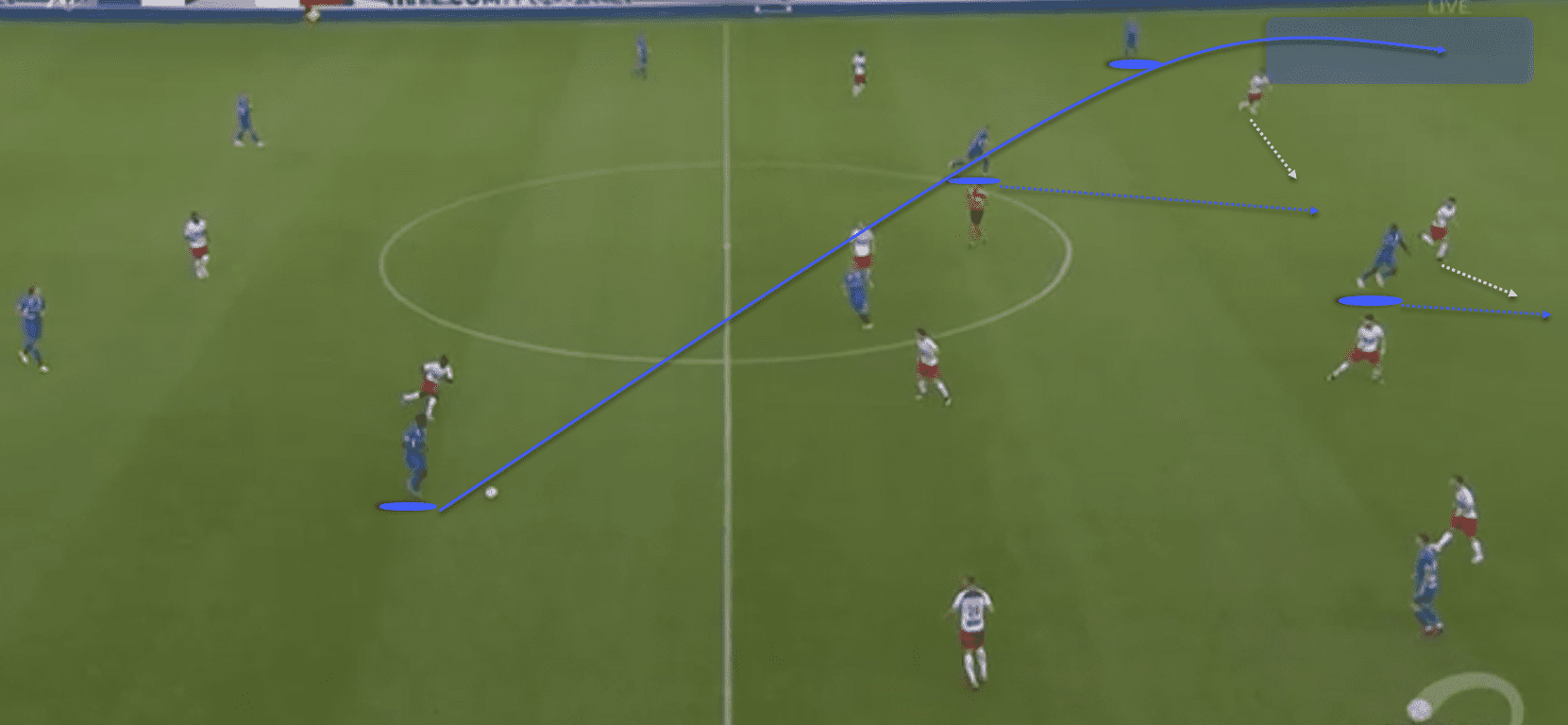
In possession, we see Cuesta favour diagonal passes that switch the play and create space that his side can attack into. We see this in the example above as Cuesta has possession just inside his own half. He has carried possession forwards towards the half-way line and is being closed down by an opposition player. There are two Genk players making forward runs and these distract the defenders. That creates the opportunity for the diagonal pass to be made to access the opposite side.
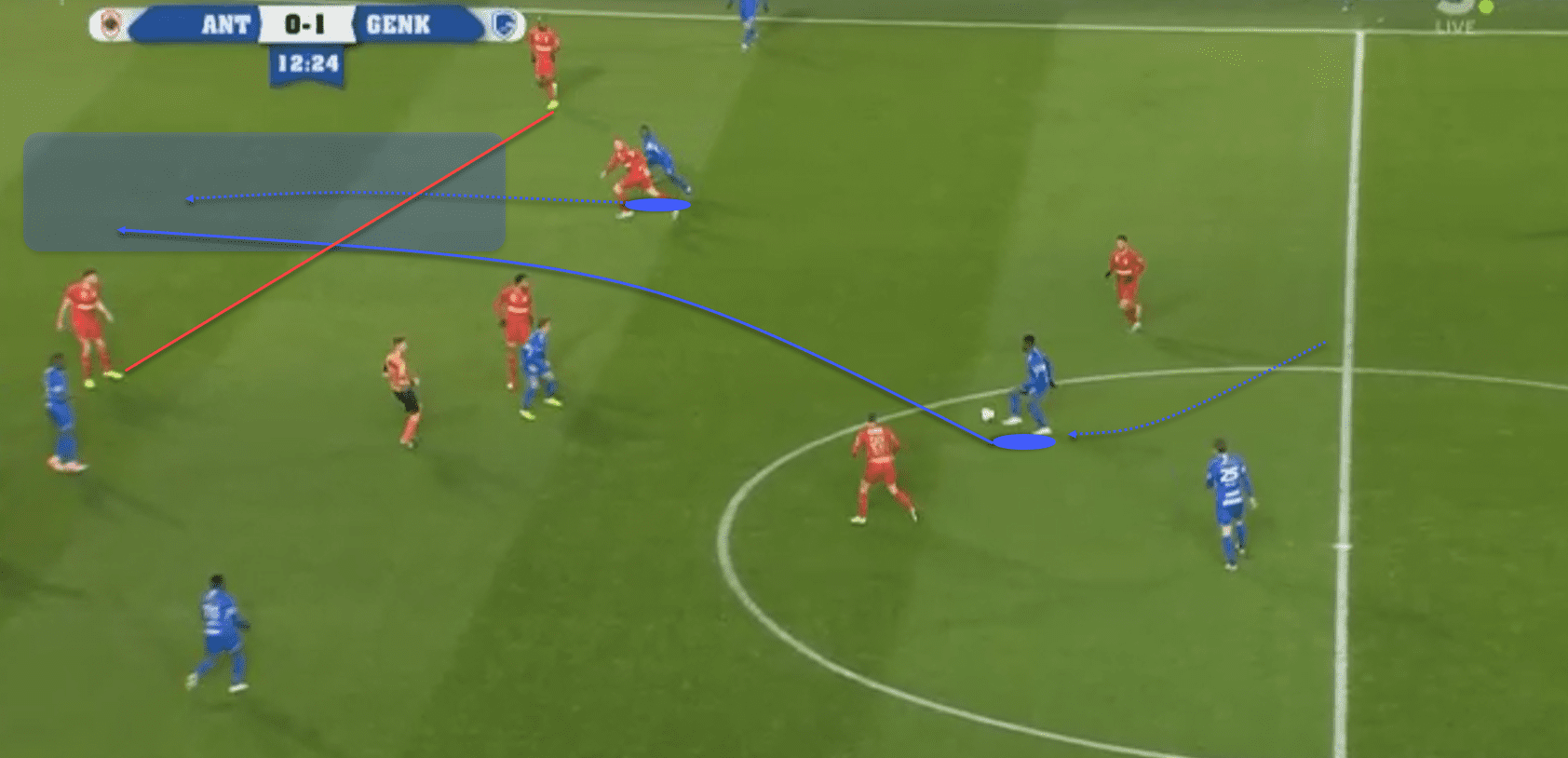
Cuesta is, however, just as suited to playing through balls beyond the defensive line. We see this above as the Colombian defender has taken possession and driven forward with the ball. There is a large gap in the defensive line and as Cuesta steps out we see a Genk player make a vertical run to attack this space, Cuesta reads the danger and is able to play the through ball.
Given that this is his first season in European football it is unlikely that Cuesta will move before the summer at least. When he does move on I would expect clubs in France and Germany, in particular, to be interested in securing his signature.
Kristoffer Ajer 21-years-old (Celtic)
Celtic have lost their way somewhat in recent seasons but there was a time in which their recruitment was amongst the strongest in Europe. The likes of Virgil van Dijk, Victor Wanyama, Moussa Dembele and then Odsonne Edouard were all signed for low fees with only Edouard still playing in Glasgow. All of the others on that list made Celtic a significant profit when they moved on to a larger platform. We can also add the name of Kristoffer Ajer to that list. The Norwegian international defender has gone from strength to strength over the last 18 months and now, at 21-years of age he looks ready to take the next step in his career.
Ajer started his career in his native Norway with Start before moving to Celtic in 2016 for a reported £500K. Celtic are likely to demand a minimum of £20M should any club want to sign the Norwegian now. There have been rumours in recent weeks that Ajer no longer wants to play for Celtic coach Neil Lennon and this may fast track his move to another club.
So far this season Ajer has played 3314 minutes. Defensively he stands out winning 5.51 aerial duels and completing 4.21 interceptions per 90 minutes. On the ball, however, is where the Norwegian international stands out. He is registering 7.26 passes to the final third, 19.31 forward passes and 9.65 progressive passes per 90 minutes.
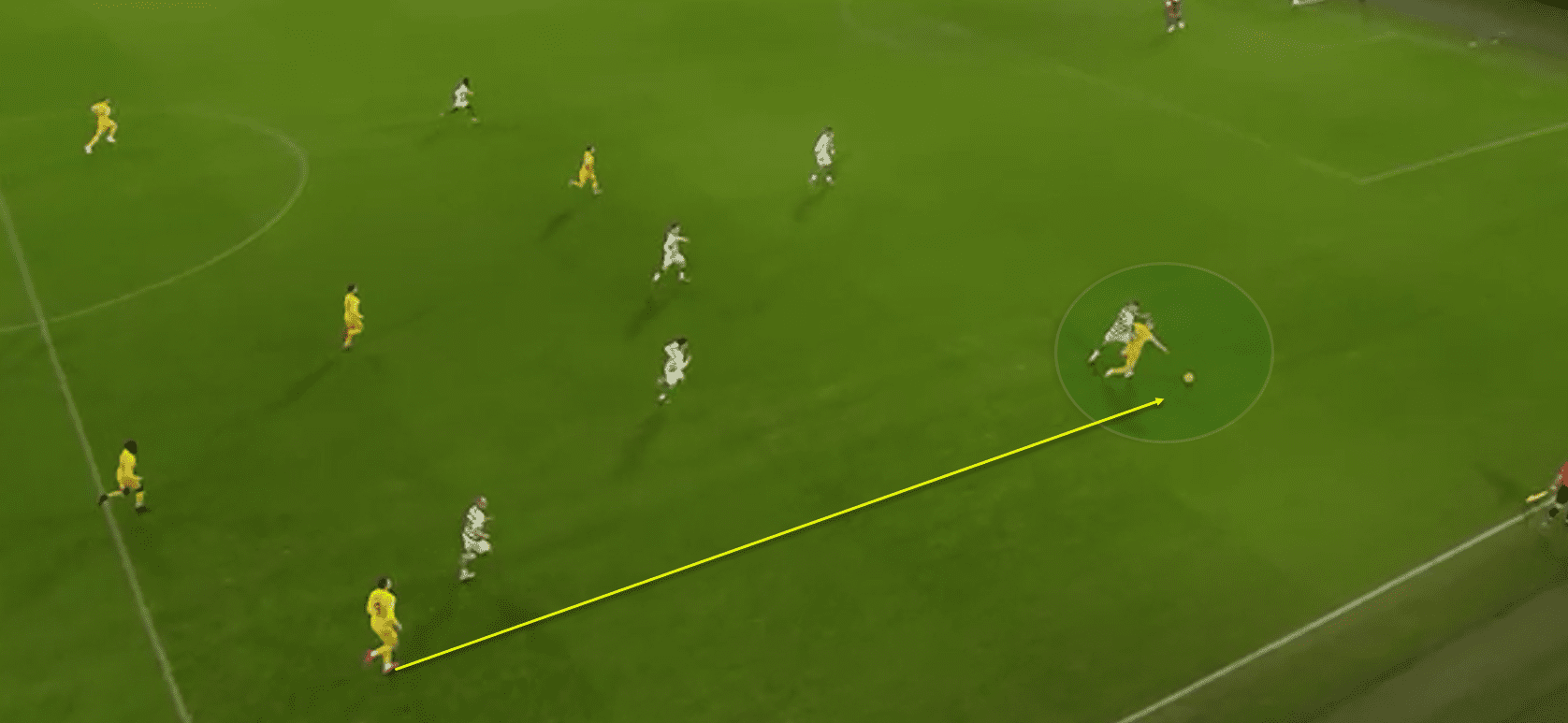
Ajer is tall and covers the ground extremely well. This gives him an advantage when defending isolated 1v1 against attacking players. We see this in the image above as the opposition look to attack down the wide area. The left-back for Celtic has been caught high and out of possession but as the pass is played forward Ajer simply moves across and overpowers the attacking player.
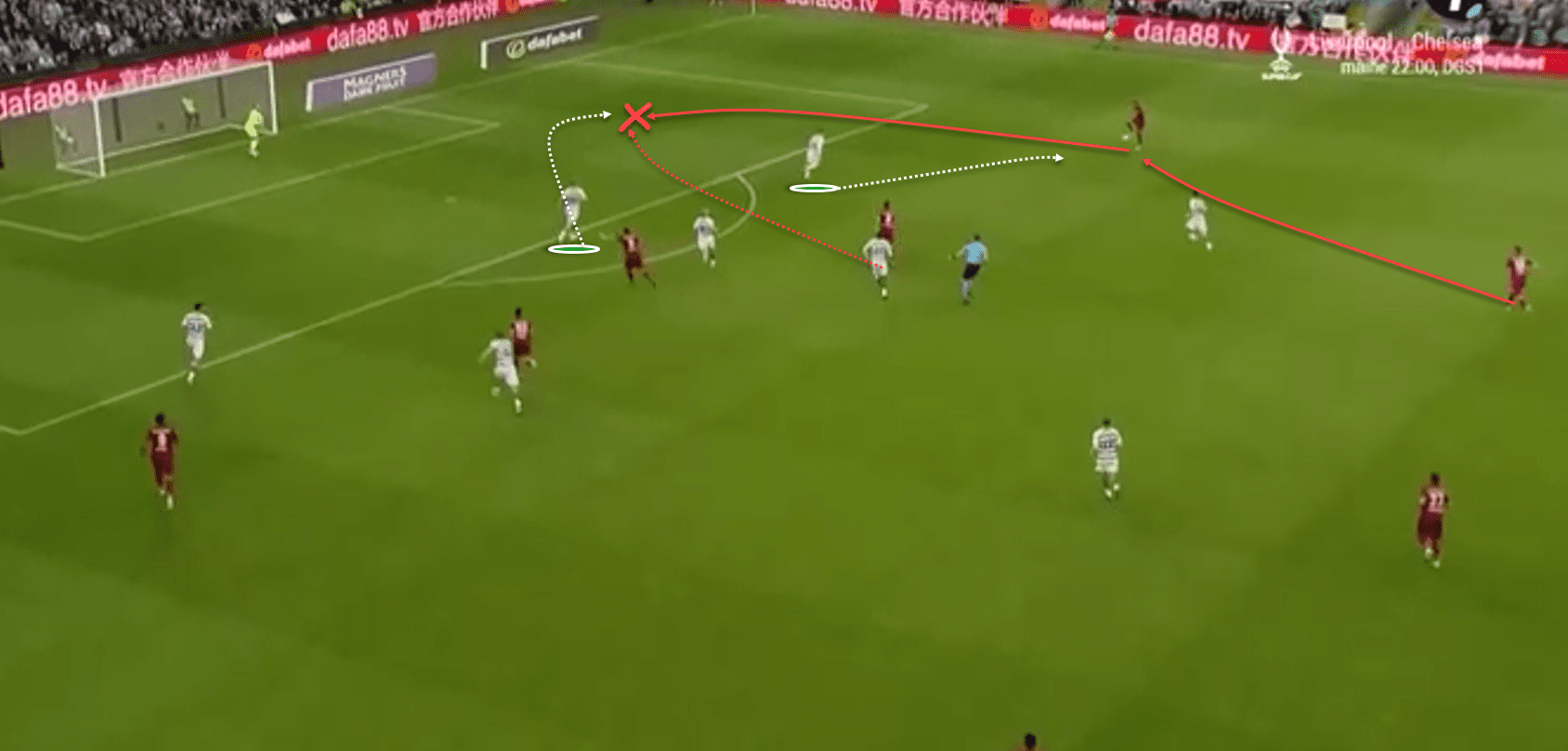
The Norwegian international also reads the game well. We see this example, from a match in Europe, as the opposition look to play out into the wide spaces. The fullback is pulled out of the defensive line to engage the ball carrier. This opens up space an attacking player makes a vertical run into this space. Ajer is quick to read the danger and he covers around to win the ball as the opposition look to use this space to access the penalty area.

Ajer has an excellent range of passing and is able to access all areas of the field. We see this above as the Norwegian plays a driven through ball that bypasses all of the opposition and releases the wide forward into space. Often, when defenders have the ball in these areas we see the lofted diagonal ball to access the opposite side. Here, however, Ajer drives a low pass inside the fullback and into the path of his teammate.
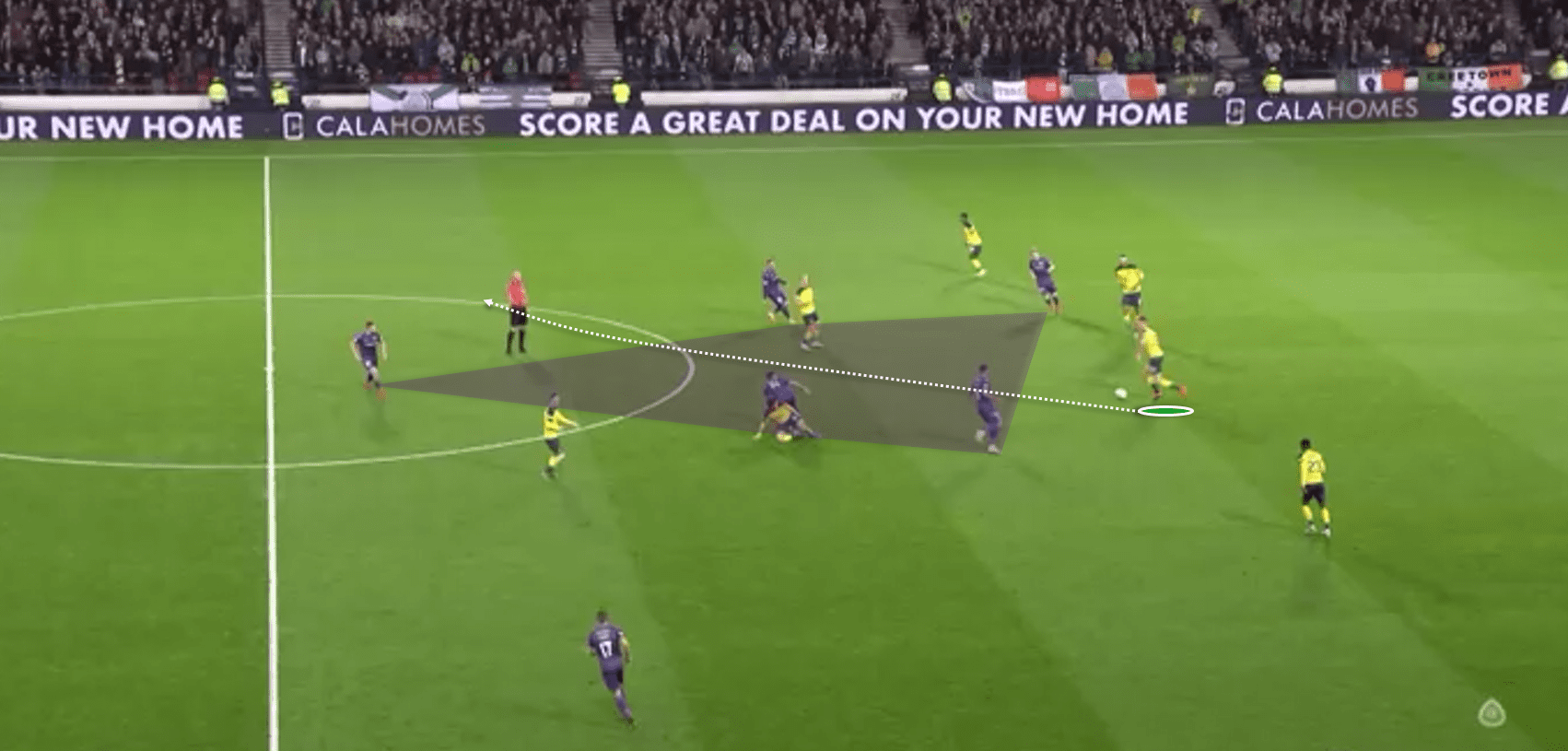
Ajer though is not only strong when passing the ball out from the back. He also has the ability and confidence to run with the ball from the back. This is an extremely effective skill for a defender to have as it creates opportunities to overload and plays through the opposition midfield. Above we see a situation with Akjer in possession on the first line. He quickly drives through the five opposition players in the image. This takes five players out of the game and gives Celtic the opportunity to seriously overload the defensive unit.
Ajer is likely to move from Celtic sooner rather than later. The likes of Arsenal or Manchester United appear to offer likely landing spots. Any interested club should be warned though, the Norwegian will not come cheap.
Axel Disasi 21-years-old (Remis)
Axel Disasi is the player on this list who will perhaps be most unfamiliar to readers. It seems as though every season at least one player emerges from the French top flight to make a genuine impact and attract scouts from all over Europe. Over the first half of this season that player has been Axel Disasi of Reims.
Now, in his age 22 season, Disasi has enjoyed a breakout start to the 2019/20 season. Physically imposing, at 6ft3, he is strong and quick over short or sustained distances. Indeed, there is more than a passing resemblance in his game to that of Ibrahima Konate of RB Leipzig. There is absolutely no doubt that Disasi will be available for a fraction of the cost of Konate. Disasi was born in France but also qualifies for the Democratic Republic of Congo through his parents. He grew up, as so many other footballers have, in the suburbs of France and made his first steps as a professional at Paris FC. Reims picked him up on a free transfer in 2016 in a move that could prove ingenious when Disasi eventually makes his move.
So far this season Disasi has played 1716 minutes. Defensively he is dominant with 5.77 aerial duels and 4.35 interceptions per 90 minutes. In possession, Disasi is still slightly raw but there are signs that in a more possession orientated system he will develop into someone who progresses the ball well. He is averaging 5.4 passes into the final third, 15.68 forward passes and 7.71 progressive passes per 90 minutes.
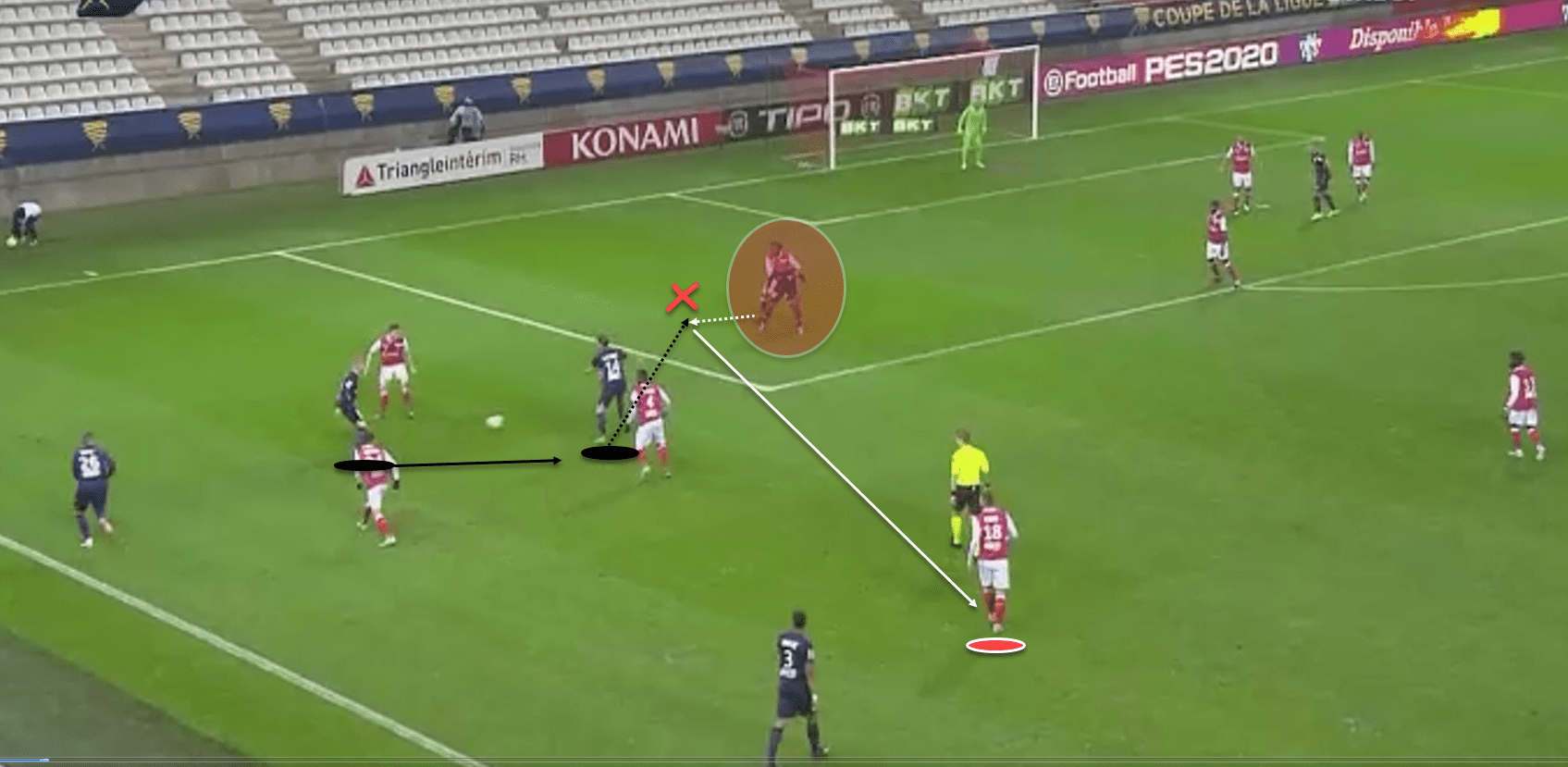
Disasi is physically very strong and he controls the space around him very well. He is capable of holding his ground against most forwards however much they try to push back into him to create space. We see an example of this above as the opposition connect a pass inside and an attacker has space and time to attack into the penalty area. Disasi is engaged 1v1 against a defender but as the ball carrier approaches, he simply steps forward to engage and win the ball before calmly passing forward.

As well as controlling space in the penalty area Disasi is also proactive at defending space in his own half. We see this above with the opposition finding space in the Reims half. As the attacker looks to move across to where there is space we see Disasi step out aggressively to win the ball.
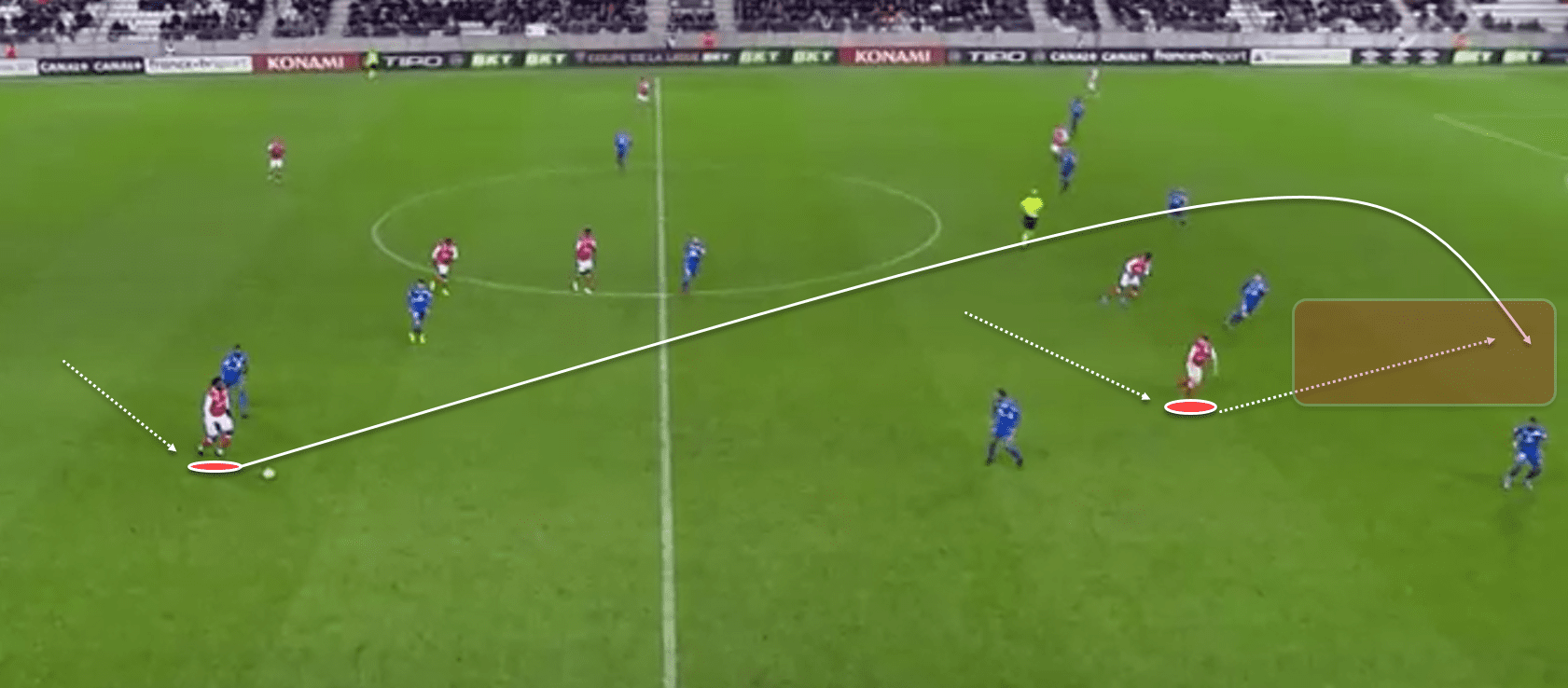
Disasi is difficult to dispossess when in possession given his size and the length of his legs. Here we see the defender having driven towards the halfway line with the ball. A Reims attacker is displaying intelligent movement ahead of the ball and he looks to time a run through space in the opposition defensive line. As he makes this pass we see Disasi play a perfectly weighted pass into this space.
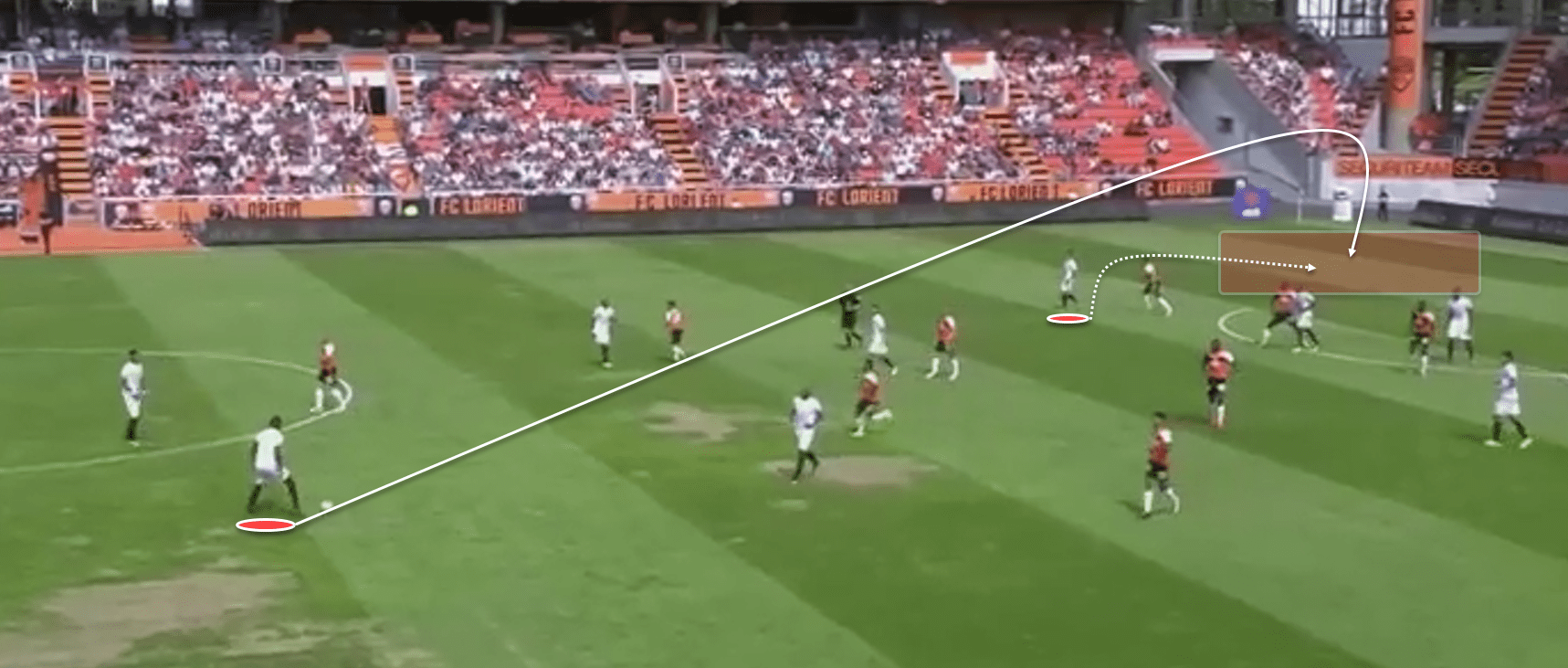
His range of passing is excellent and more often than not the weight on these passes is perfectly judged. We see this above as Disasi takes possession of the ball with time and space inside the opposition half. He plays a diagonal pass into the far side of the penalty area that is judged perfectly to give his teammate the opportunity to attack it.
Reims have already made it clear that they have no plans to sell Disasi this winter. They are aware of growing interest in the defender though and it is likely that he will be sold in the summer. A move to England or Germany seems to make the most sense given the players playing style.
Edmond Tapsoba 20-years-old (Vitoria Guimares)
Out of all of the players on this list, Edmond Tapsoba perhaps represents the best chance to secure a bargain. The 20-year-old Burkino Faso international has been one of the standout players outwith the top three sides in Portugal over the course of the last 18 months. Tapsoba moved to Portugal in 2017 having originally started his footballing journey in his home country with US Ouagadougou. This season is his first in the first-team of Vitoria Guimares having spent the entirety of the 2018/19 season in the second tier with the Vitoria B team.
Tapsoba is a very modern central defender who is comfortable defending in wide spaces when isolated or in a high defensive line. He has the pace to recover when the ball is played over the top of the defensive line but he is also displaying the ability to position himself well in relation to the opposition striker.
So far this season Tapsoba has played 2553 minutes. His defensive metrics are good with 4.48 aerial duels and 4.65 interceptions per 90 minutes. In possession, he is a good passer of the ball who progresses the ball well. He is averaging 7.58 passes into the final third, 17.84 forward passes and 10.44 progressive passes per 90 minutes.
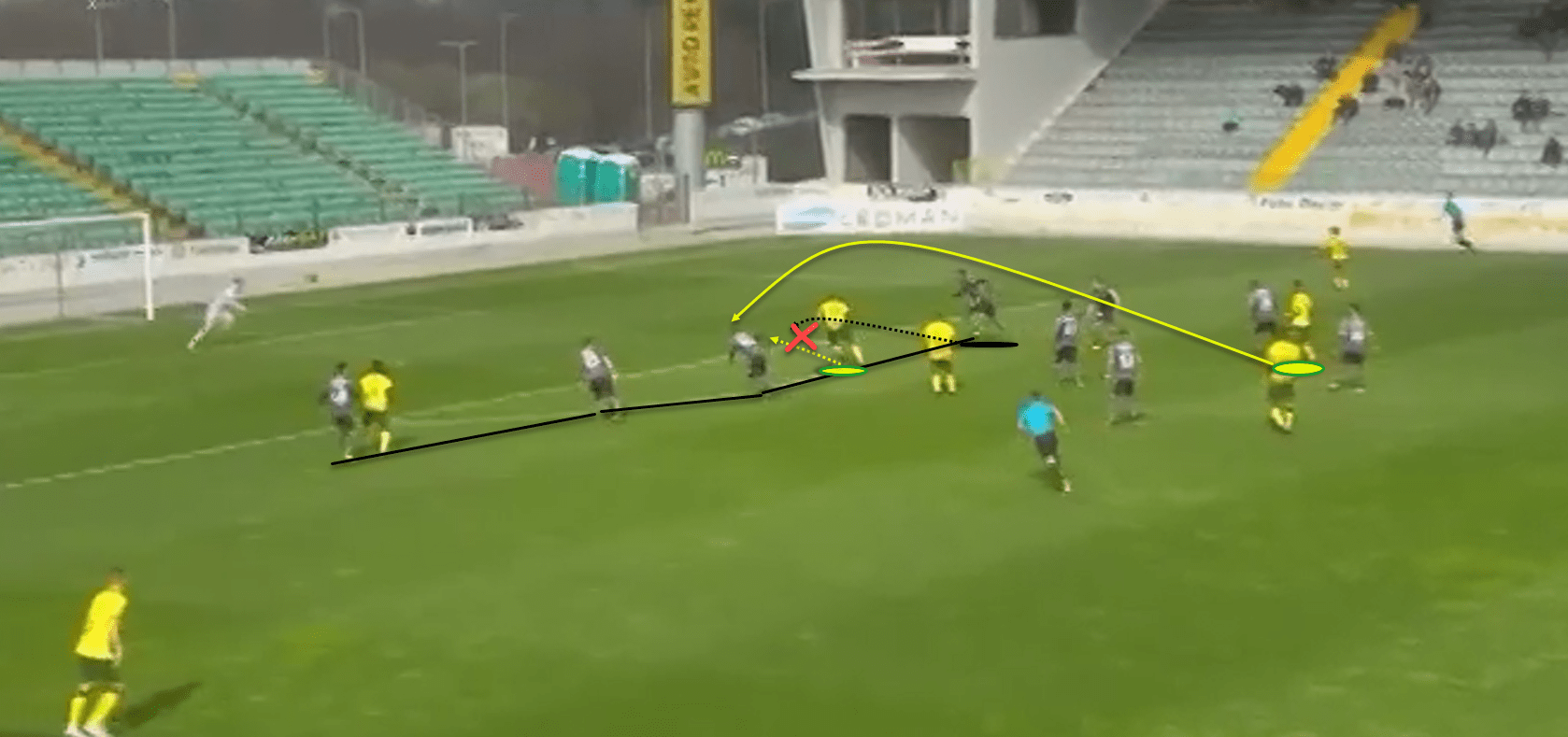
Tapsoba is more of a reactive than a proactive defender. Luckily he has the physical profile to be able to recover quickly when the opposition tries to play in behind the defensive line. We see an example of this above as the ball is played through the defensive line. Tapsoba is initially caught on the outside as the runner, on the inside, tries to attack the space. Tapsoba, however, recovers well to challenge and win the ball.
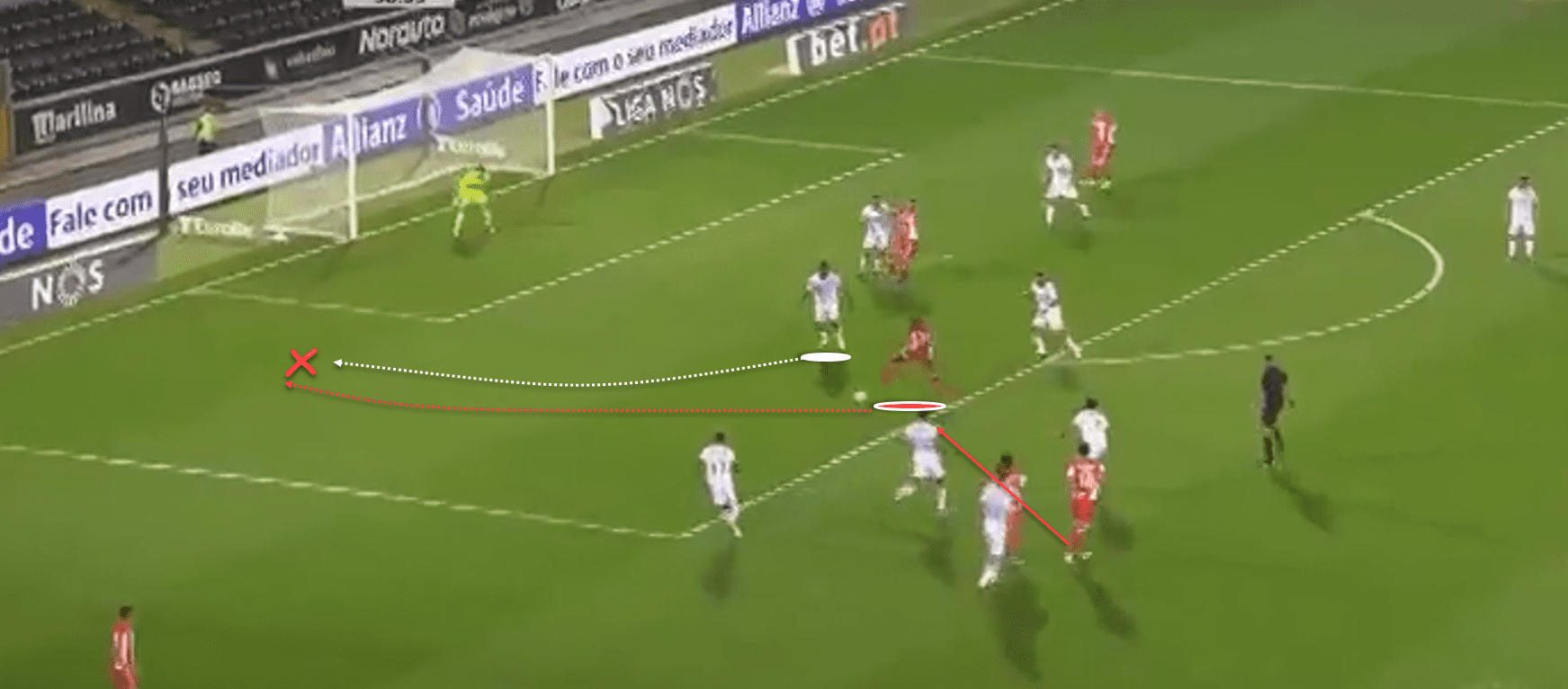
Tapsoba also has a tendency to stay on his feet when defending isolated against opposition players. We see this above as the opposition access the penalty area with a short pass before the attacker looks to attack down the outside. Tapsoba reads the run and mirrors it into the penalty area. He is careful not to dive in and give away a penalty and waits for the attacker to make a mistake before engaging and winning possession of the ball.
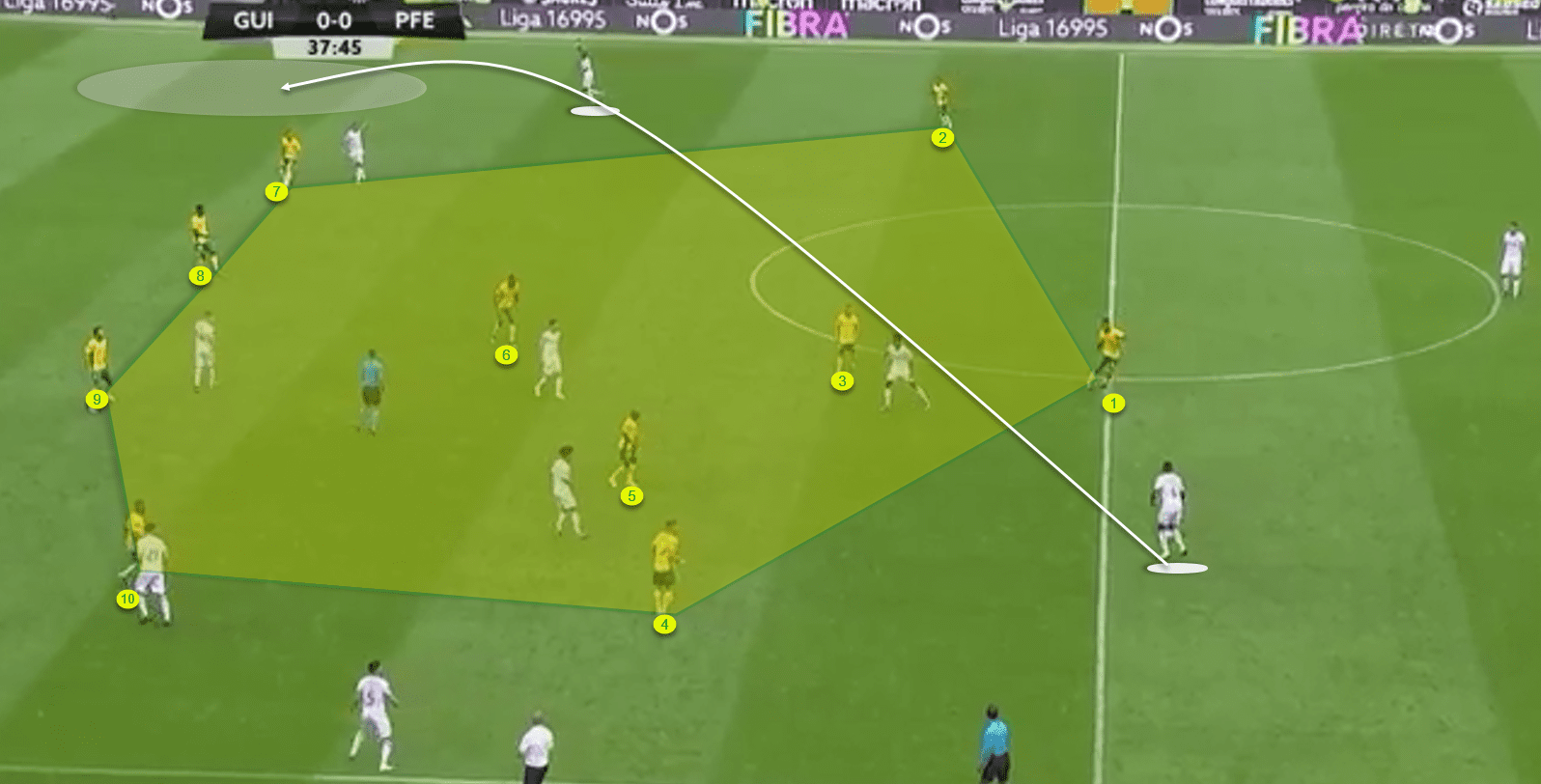
In possession, Tapsoba likes to hit diagonal passes that bypass the opposition. We see an example of this above as Tapsoba has possession just inside his own half. The opposition forward is moving to press the ball but there is space on the opposite side of the field. Tapsoba plays a diagonal pass that bypasses ten opposition players and accesses space on the far side.
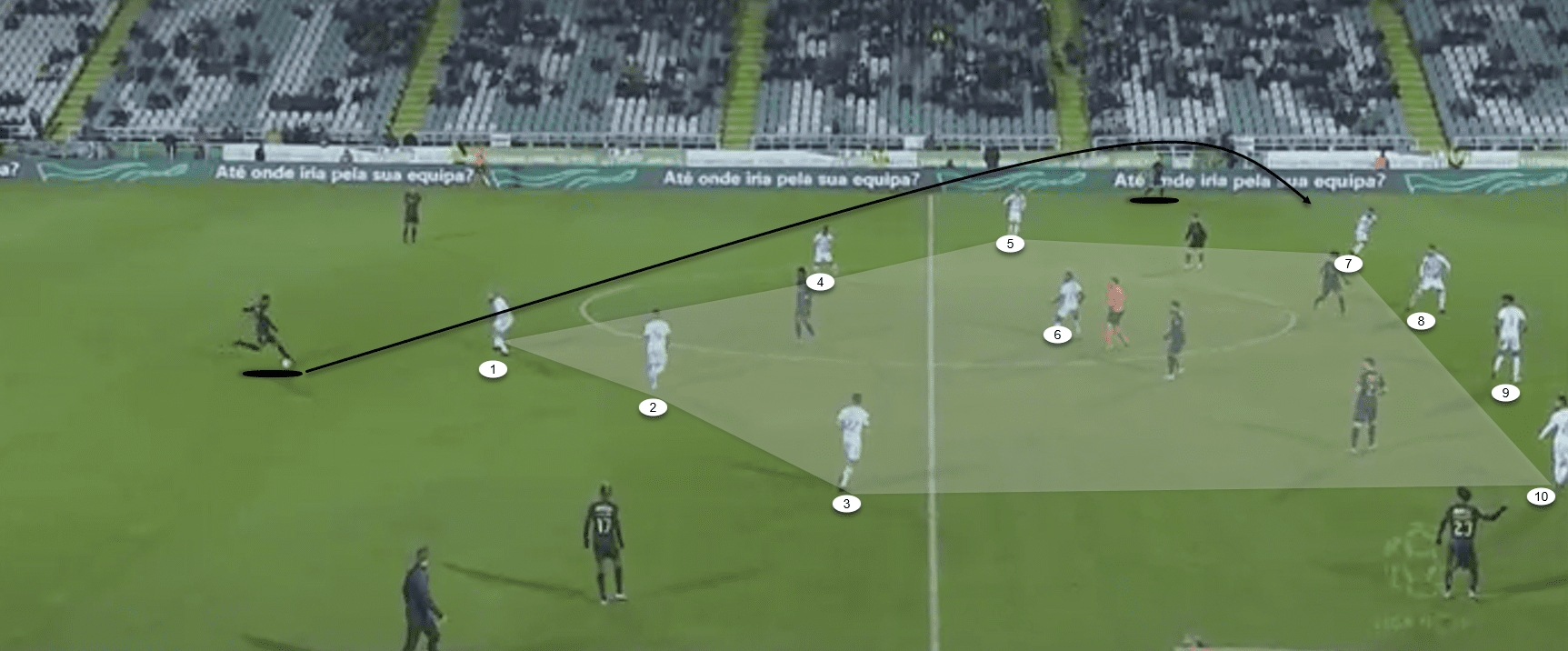
Another example of Tapsoba passing in possession is above, Once again all of the opposition are in front of the ball and the defender has possession with an opponent ready to press and engage. Instead of playing into the defensive block we see him identify the space, to the side of the block, and he plays the diagonal pass perfectly to access this space.
Tapsoba is likely to be available and Vitoria are not one of the more affluent clubs in Portugal. I would expect clubs in Germany and France to be tracking his development very carefully.






Comments